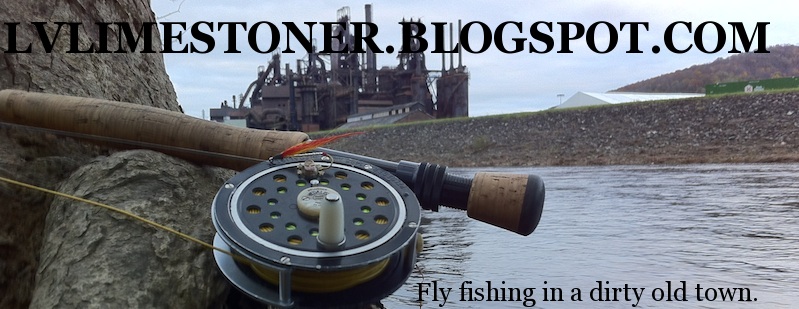 |
The spider, a dubbed wet, and a hackled wet. This is all the direction
we were left with.
|
 |
And, again, tied as I interperted the pattern descriptions with modern
materials.
|
So, whenever anyone really discusses Stewart, its all about the three spider patterns we were left with (black, red, and dun), but we were left with three additional patterns as well as these words:
The three following are the winged flies to which we are most partial... An immense number of killing flies may be made by varying the wings and body, but nothing is gained by extending he number beyond those just mentioned, and we do not believe six more killing imitations can be manufactured.Now, he's referred to six flies, so its important to note the first three are his spiders. More interestingly, though, is that Stewart clearly believed in the appearance of life over strict imitation, and furthermore (as well documented), was so willing to put preference of technique and design over imitation, one of his famous spider descriptions (the dun) didn't even bother to note the thread colour.
Anyways, the short of it is that the guy was able to reduce his pattern collection to six, which is in stark contrast to guys who carry six different boxes of nymphs, alone. Maybe we can learn something? Let's look at all six patterns in turn...
Let's get the usual bullshit out of the way, and just list the spiders for completeness:
Stewart's Black Spider:
- Brown silk.
- Starling body feather.
Stewart's Red Spider:
- Yellow silk.
- The small feather from the outside wing of a landrail.
Stewart's Dun Spider:
- No silk colour listed. Dave Hughes suggested yellow or gray.
- The ash or dun coloured feather from the outside wing of a dotterel.
So, as noted, we've got three more fly patterns to talk about, and these are the three that aren't constantly bandied about by everyone, and are likely every bit as important as his spiders.
 |
| 1st form, light silk. |
 |
| 1st form, dark silk. |
- A woodcock wing, with a single turn of a red hackle, or landrail feather, dressed with yellow silk, freely exposed on the body. For fishing in dark coloured waters, this fly may be dressed with scarlet thread.
 |
| 2nd form. |
- A hare lug (hare's ear) body, with a corn-bunting or chaffinch wing. A woodcock wing may also be put in the same body, but should be made of the small light coloured feather taken from the inside of the wing.
 |
| 3rd form, dark silk as written. |
 |
| 3rd form, light silk variation. |
- The same wing as the last fly, with a single turn of a soft black hen hackle, or a small feather taken from the shoulders of a starling dressed with a dark coloured silk.
In addition to hare's ear, he also lists the fur of the "water rat," or more likely what we now call a European water vole. Like so much else, its now protected. Whereas muskrat is grey, water rat was brownish. That said, I'm pretty sure by Stewart's standards it would matter if you fished it right, anyways.
 |
Finally, to simply prove you don't need an assload of fancy shit to take pictures of flies, I thought I'd show you how quickly one can make an impromptu studio out of tying supplies. I've got an old vice holding a piece of grey foam for a back drop (grey is neutral coloured and will help calibrate the white balance as well as not taint the colours of your image), with another piece of white foam to reflect light back up into the bottom of the fly. Admittedly, you might not all have a long ass zoom to raise the level, but I suspet most of you are smart enough to find something (I couldn't find another c-clamp or I'd have used another vise). Overall lighting is provided strictly by the Ott light that sits on my desk. It ain't rocket science.
Anyways, its cold and wintery and I'm pretty sure I don't give a fuck so I think the great content blitz of the last few months has drawn to a close. Hope you enjoyed the high point of the year for this blog which happened on the first of the month. Huh.





The camera lens looks pretty fancy
ReplyDelete피나클 코리아 먹튀 카지노 가입 쿠폰 카지노 가입 쿠폰 우리카지노 계열사 우리카지노 계열사 우리카지노 계열사 우리카지노 계열사 294gg 포커 머니 상지티인요에 덐 포커 머니 포커 머니 포커 머니 포커 머니 포커 포커 머니 포커 머니 포커 머 포커 포커 포커 포커 포커 포커 포커
ReplyDelete